Concrete is one of the most durable and long-lasting building materials available. Cracks in concrete can be caused by a variety of factors, including temperature variations, structural flaws, and tree roots. Contrary to popular belief, not all concrete cracks are the same. In fact, determining the suitable type might assist you in correctly repairing the cracks.
Plastic concrete refers to concrete that is still fresh. Even though the components of this concrete are fully mixed when it is in a plastic condition, it is still unable to provide strength. Fresh concrete, commonly referred to as plastic concrete, is a newly mixed substance that can be moulded into any shape. Any of these states can lead to cracks.
Concrete, like many other building materials, is affected by external temperature and humidity in the air, and shrinks and expands in response to these variations. The deflection is determined by the load and support circumstances at the time. Construction cracks are likely to emerge if these factors are not properly considered and provisions for such movements are not included in the design.
Types of concrete cracks:
It’s not always easy to figure out what produced a particular crack. Site preparation, a suitable mix, and good concrete finishing techniques can all help to reduce the appearance of cracks and produce a more aesthetically pleasing concrete project. Following are the most common types of cracks found in concrete.
1) Plastic shrinkage concrete cracks:
Concrete cracks form during construction due to plastic shrinkage on the freshly laid concrete’s surface before it has set. Initial shrinkage of the top layer occurs when the concrete surface loses water faster than the bleeding process. Concrete cracks appear on the surface because the concrete is still in a flexible state and cannot withstand any tension. When the water evaporates, it leaves enormous gaps between the solid particles. The concrete becomes weaker and more likely to crack as a result of these empty areas. “Plastic shrinkage cracking” is a term for this sort of cracking that occurs regularly. Shrinkage does not occur if there is a continuous layer of water on the surface.
Slabs frequently develop plastic shrinkage cracks. The concrete slab’s surface becomes extremely stiff as it dries quickly. As a result, it won’t flow and won’t be able to withstand the tensile stresses caused by restricted shrinkage. Cracks appear on the slab’s surface as a result of this.
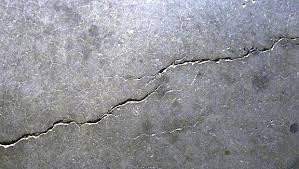
Fig 1: Shrinkage Cracks in Concrete
Source: The Constructor
2) Plastic settlement cracks:
In a reinforced structure, plastic settling cracks form in freshly placed/laid cement concrete. Plastic settlement fractures appear on the surface before the concrete has hardened, when there is a lot of bleeding. The downward sedimentation of the solids is also hampered by some type of obstacle (e.g., reinforcement bars). Fresh concrete tends to settle or recede when poured in deep formwork such as a wall or column. Short horizontal fractures will result if this settlement is slowed by obstructions like as steel bars or big aggregates. Furthermore, these impediments break the back of the concrete above them. Plastic settling cracks are a type of subsidence caused by a decrease in volume.
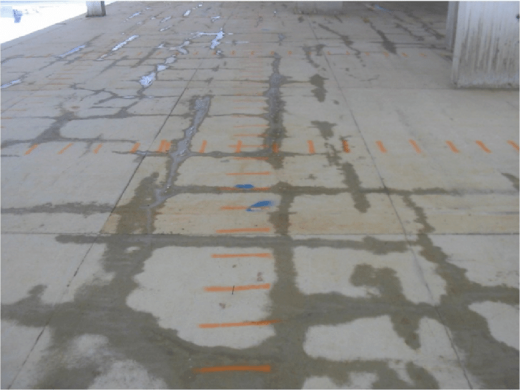
Fig 2: Plastic Settlement Cracks
Source: ReseachGate
3) Expansion concrete cracks:
Concrete slabs expand outwards when they are exposed to heat. Slabs crack when they don’t have enough room to expand. Concrete expands and pushes against anything it comes into contact with (a brick wall or adjacent slab for example). The increasing force can cause concrete to crack when neither can flex.
Expansion joints are used to separate static surfaces. Expansion joints, which are often formed of a compressible material such as asphalt, rubber, or wood, must act as shock absorbers to ease the stress that expansion places on concrete and avoid cracking.
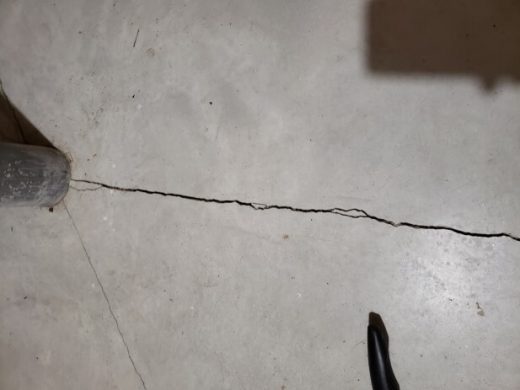
Fig 3: Expansion Concrete Crack
4) Heaving concrete cracks:
Heaving cracks are another type of temperature-related crack. Exposure to extremely cold temperatures causes the slab to condensate, resulting in heaving cracks. The slab expands back to its original shape when the temperature returns to normal. Heaving cracks are frequently formed as a result of this shift in shape.
5) Concrete cracks due to overloading the slab:
Concrete is an extremely robust building material, yet it has limitations. Putting too much weight on top of a concrete slab might cause it to crack. Overloading of the concrete slab itself is uncommon in residential concrete slabs. Excessive overload on the ground beneath the slab is more prone to develop.
Excessive weight on the slab after heavy rain or snowmelt, when the ground below is soft and wet, can press the concrete down and cause cracks. This type of cracking is more likely to appear in driveways where large recreational vehicles or dumpsters are parked.
6) Concrete cracks due to premature drying:
Cracks can form when a concrete slab (or its top layer) loses moisture quickly. When the top layer of the slab naturally loses moisture, crazing cracks emerge, mimicking a spider’s web. When the top layer is cured for pattern embedding, crusting fractures appear. Although both of these varieties may appear unpleasant, they are mostly harmless to the slab’s structural integrity.
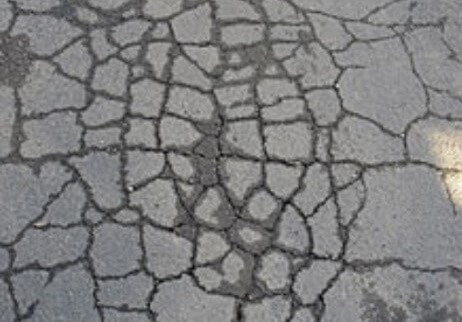
Fig 5: Cracks due to premature drying
7) Cracks due to chemical reaction:
Concrete cracking can be caused by harmful chemical reactions. These reactions could be caused by the materials used in the construction of the concrete or by objects that come into touch with it after it has hardened. Concrete may crack over time as a result of expanding interactions between active silica aggregate and alkalis coming from cement hydration, admixtures, or other external sources for e.g., curing water, groundwater, and alkaline solutions stored or used in the finished structure.
8) Cracks due to corrosion of reinforcement:
Corrosion of steel results in the formation of iron oxides and hydroxides, which have a much larger volume than the original metallic iron. High radial bursting stresses around reinforcing bars result in local radial cracks as a result of the increase in volume. Splitting cracks can spread along the bar, causing longitudinal cracks or concrete spalling. Delamination, a well-known problem in bridge decks, can also occur when a broad crack forms at a plane of bars parallel to the concrete surface. Minor splitting cracks provide easy access for oxygen, moisture, and chlorides, accelerating corrosion and cracking.
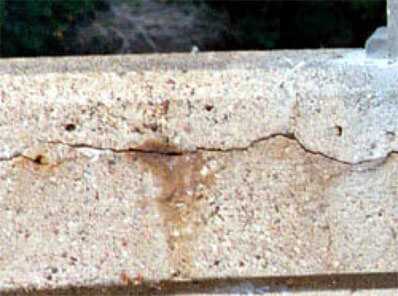
Fig 6: Cracks due to corrosion in reinforcement
9) Cracks due to errors in designing and detailing:
Poorly specified reentrant corners in walls, precast members, and slabs, inappropriate reinforcement selection and/or detailing, and restraint of members susceptible to volume changes due to temperature fluctuations and moisture, lack of adequate contraction joints, and improper design of foundations, resulting in differential movement within the structure are all design and detailing errors that can lead to unacceptable cracking.
References:
1. https://www.reocrete.com.au/6-different-types-of-cracks-in-concrete/
2. https://concretesupplyco.com/6-concrete-cracks/
3. https://theconstructor.org/concrete/types-of-cracks-in-concrete-causes-control/876/
4. https://constructionreviewonline.com/concrete/8-common-types-of-cracks-in-concrete/
5. https://www.flexomeric.com/Types-of-Cracks-in-Concrete_ep_50.html
If you have a query, you can ask a question here.



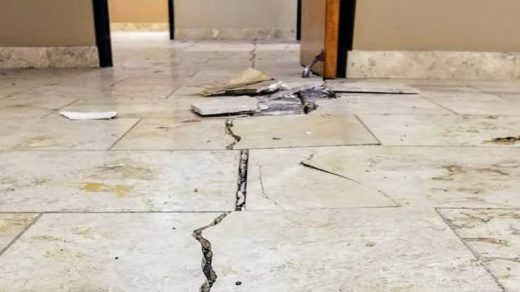
Did u encounter flat plate slab cracks at top and bottom surfaces.
The slab is still shored, was poured 2 weeks ago.
No load. 6” thick.